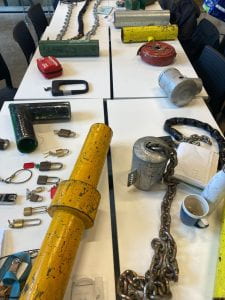In today’s world, many of the biggest social challenges we face – such as climate change, inequality, and poverty – are interconnected and complex. These “wicked problems” cannot be solved with traditional linear approaches that assume simple cause-and-effect relationships. Instead, they demand a more holistic perspective. Systems Practice offers this by helping us understand how different parts of a system interact through feedback loops and adaptive behaviours, enabling more effective and sustainable change.
An example comes from Kiribati, where an aid program aimed at reducing overfishing subsidised coconut farming to provide alternative income. Unexpectedly, this led to locals having more free time and money to fish for leisure, worsening the problem the intervention sought to solve. This highlights the unintended consequences that often arise when intervening in complex systems and underscores the need to see the whole picture.
Most social change efforts mistakenly rely on “clock problems”, issues that are predictable and solvable with expertise. However, most contemporary challenges are “cloud problems,” complex and adaptive issues requiring systems thinking. Philosopher Karl Popper distinguished these two types to help clarify why traditional approaches fall short in addressing today’s problems.
Central to Systems Practice is the recognition of various forces within a system – enablers that drive positive change (like leadership and innovation), and inhibitors that block progress (such as poverty or distrust). These forces can be structural (institutions, policies), attitudinal (mindsets, cultural norms), or transactional (power dynamics, communication patterns).
Understanding feedback loops, the cyclical cause-and-effect patterns within a system, is crucial. Some loops reinforce problems over time (vicious loops), while others support improvement (virtuous loops), stabilization, or stagnation. These loops reveal the system’s deep structure and help identify where change efforts should focus.
Mapping a system visually helps make sense of these complex interactions, but the map alone is not enough. A narrative is essential to explain the story behind the connections, focusing on meaningful relationships rather than every detail, much like a subway map highlights key routes. This mapping process uncovers insights and reveals leverage points, strategic spots where small interventions can trigger wide-reaching change.
Finding these leverage points requires us to resist familiar assumptions and instead listen closely to the system’s signals. It involves identifying areas resistant to change, places with untapped energy, and existing bright spots of success. Effective change emerges by nudging and working with the system’s own dynamics rather than imposing external fixes.
Crafting a successful systems strategy means taking clear stances, developing explicit hypotheses about how change will occur, focusing on critical dynamics, and preparing for uncertainty. It must remain simple and communicable to diverse stakeholders. Common pitfalls include confusing goals with strategy, trying to do too much at once, and ignoring the system’s current realities and resistances.
Two case studies illustrate the power of this approach. A U.S. education initiative moved beyond funding isolated programs to mapping and transforming the entire education system, engaging hundreds of stakeholders to reveal key inequities and design a shared vision for every child’s potential. Similarly, Humanity United applied systems practice in peacebuilding by challenging assumptions, adapting strategies, and engaging local experts to foster sustainable peace.
Across these examples, shared competencies include systems thinking, strategic framing, collaborative practice, adaptive learning, and purposeful visioning, all applied at multiple levels of the system.
Finally, to ensure meaningful progress, systems strategies must be aligned with rigorous impact measurement and embrace iterative learning cycles: testing hypotheses, adapting, and evolving.
At its core, Systems Practice is not merely a set of tools but a transformative mindset. It replaces simplistic linear problem-solving with adaptive, participatory, and systemic approaches; essential for achieving lasting change in today’s complex social challenges.
Acknowledgement: Acumen’s Systems Practice course
 Greenpeace’s approach is rooted in non-violent, creative confrontation to address environmental and peace issues globally. They prioritise moral integrity, diversity, and justice, aiming for systemic change while remaining independent. Non-violence is chosen for its moral high ground, accessibility, and effectiveness in controlling messaging, exposing brutality, and avoiding escalation.
Greenpeace’s approach is rooted in non-violent, creative confrontation to address environmental and peace issues globally. They prioritise moral integrity, diversity, and justice, aiming for systemic change while remaining independent. Non-violence is chosen for its moral high ground, accessibility, and effectiveness in controlling messaging, exposing brutality, and avoiding escalation.
 The core of the Compassionate Systems Framework lies in cultivating “compassionate integrity” in students and teachers, promoting alignment between thoughts, feelings, and actions through an evolving awareness of interconnectedness. It introduces concepts like mindfulness meditation, generative social fields, and core capacities of compassionate systems leadership, emphasising the significance of emotional literacy and the quality of connections.
The core of the Compassionate Systems Framework lies in cultivating “compassionate integrity” in students and teachers, promoting alignment between thoughts, feelings, and actions through an evolving awareness of interconnectedness. It introduces concepts like mindfulness meditation, generative social fields, and core capacities of compassionate systems leadership, emphasising the significance of emotional literacy and the quality of connections.